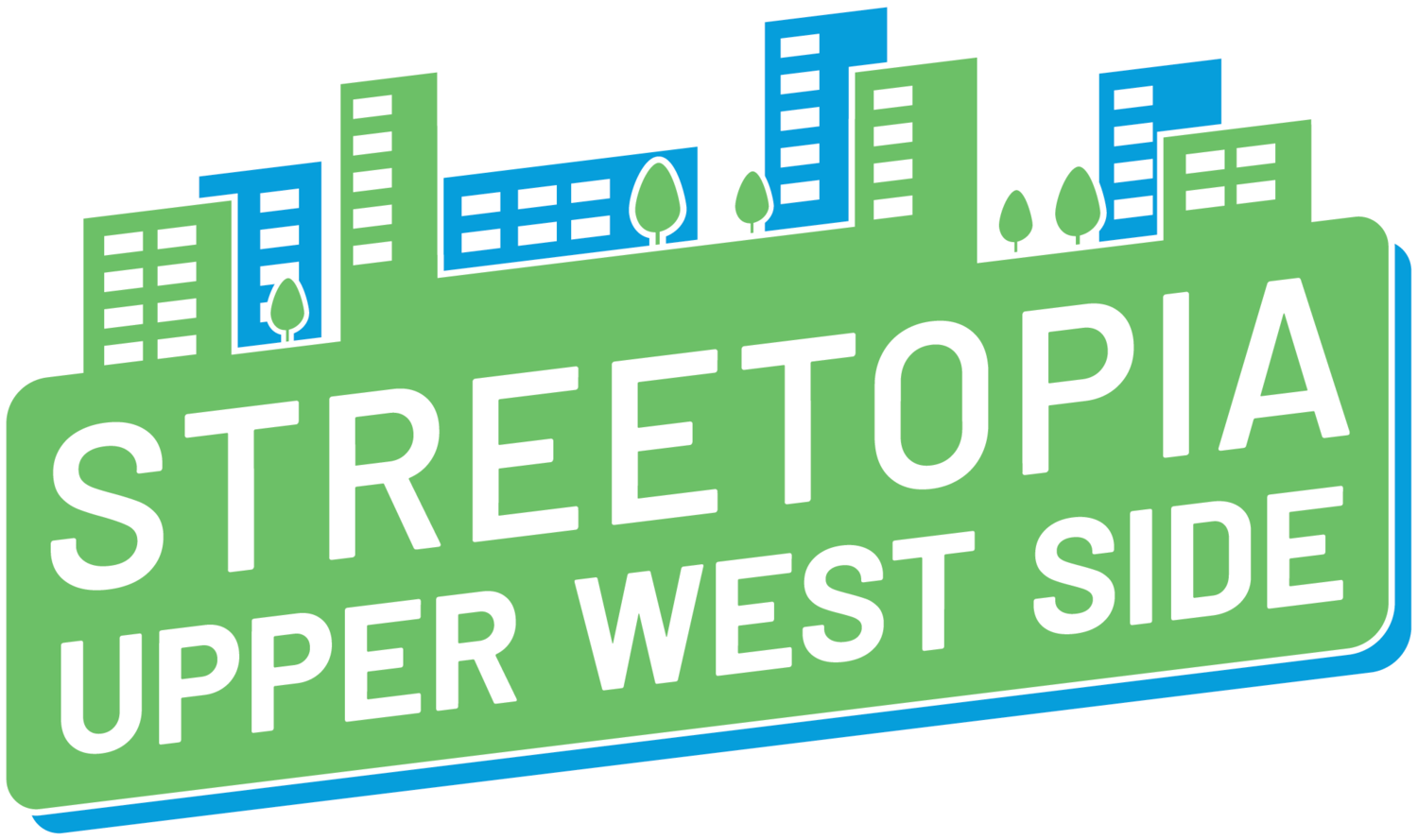Reclaiming the Curb
Source: ModaCity
New York City boasts 3-4 million on-street parking spots. Nearly all of them are FREE.
That’s nearly 816 million square feet of space, or 22 Central Parks. In a city where we pay by the square foot for space to live, recreate, and store our things, it’s absurd that we give away our community space to people storing cars for free. Though convenient for parkers, this public subsidy/hand-out reduces our quality of life and degrades the beauty and health of our neighborhood and our people.
Free parking increases traffic through our neighborhood streets by encouraging people to drive to the neighborhood and to circle for parking once they arrive. This increase in traffic also increases the likelihood of crashes, making our neighborhood more dangerous for walkers and bikers. In 2008, at a time of lower car ownership than present day, Transportation Alternatives conducted a study of Upper West Side drivers that found Upper West Siders drive for an extra 366,000 miles in search of parking — the equivalent of driving from the earth to the moon..and halfway back. Collectively, this searching for parking spews an extra 325 tons of carbon dioxide emissions annually—equivalent to the emissions from 69 passenger vehicles driven for one year! (Transportation Alternatives). The extra idling noise and honking is also jarring and actively contributes to heart disease, obesity, and cognitive impairment in children.
If curbside spots were allocated for bus pick-up/drop-off, 136 people would benefit. if curbside spots were allocated for passenger loading, 130 people would benefit. BUT, in our current system of (mostly) free parking, only ONE, lucky person benefits." SOURCE
Free parking is an even worse deal when you consider all the other ways the curb could be working for us if only it weren’t being used for the storage of cars. The National Association of City Transportation Officials (NACTO) calls the curbside “the most valuable space that a city owns and one of the most underutilized.” In today’s cities, private car storage is a relic that competes with countless other uses. Because we dedicate such a preponderance of the curb to private storage though, all of these other competitive uses get pushed out into moving traffic lanes, leading to double-parking, parking in the bike lane, and honking. The curb is public space and should benefit the whole public, rather than benefiting a few car owners while making the street more dangerous for the rest of us
There are many other possible uses for such coveted urban space. We could redesign the curb space to accommodate loading zones to simplify our deliveries or create pick-up/drop-off zones for taxis and car services. We could add parklets or street seating areas to provide pleasant places for neighbors to socialize or plant trees and flowers to green the neighborhood. Trash receptacles could move from the sidewalk to the curb to clear the sidewalks for walking. Other better uses for curb space include bike lanes, car share spaces, and wider sidewalks.
Another possibility is “shared use mobility zones.” At certain times of day, the city reserves the curb for specific functions. During rush hour, a pick up stop for a microtransit service. In the afternoon, the spot becomes a loading zone for deliveries without double parking. At night, it becomes a designated point where a for-hire car can meet passengers leaving the restaurant on the corner. The curb becomes flexible space that can adjust based on the neighborhood’s goals. Regardless of the many creative uses for the curb that neighborhoods could employ, one thing isn't debatable: private curb parking could be better managed through pricing and/or a residential permit system
In addition to creating more pleasant neighborhood streets, eliminating free curbside parking is foundational to building a better Upper West Side. Building a complete protected bike network, daylighting intersections, pedestrianizing Broadway, and redesigning the street grid all hinge on using the curbside space more productively. A system-wide approach to redefining the curb will help smooth over the process for all these other campaigns by changing the street parking ownership culture.
Space for people did not always end at the street. Before mass motorization, the curb was a fluid space used by all for social, transport, and commercial use as needed. We can once again create curbs that serve all people this efficiently. As Polly Trottenberg said at a recent conference, “there’s certainly a lot more the city needs to do to innovate at the curb” and “it’s an area we know we could do better.” Use your imagination: what would YOU do with this public space?




